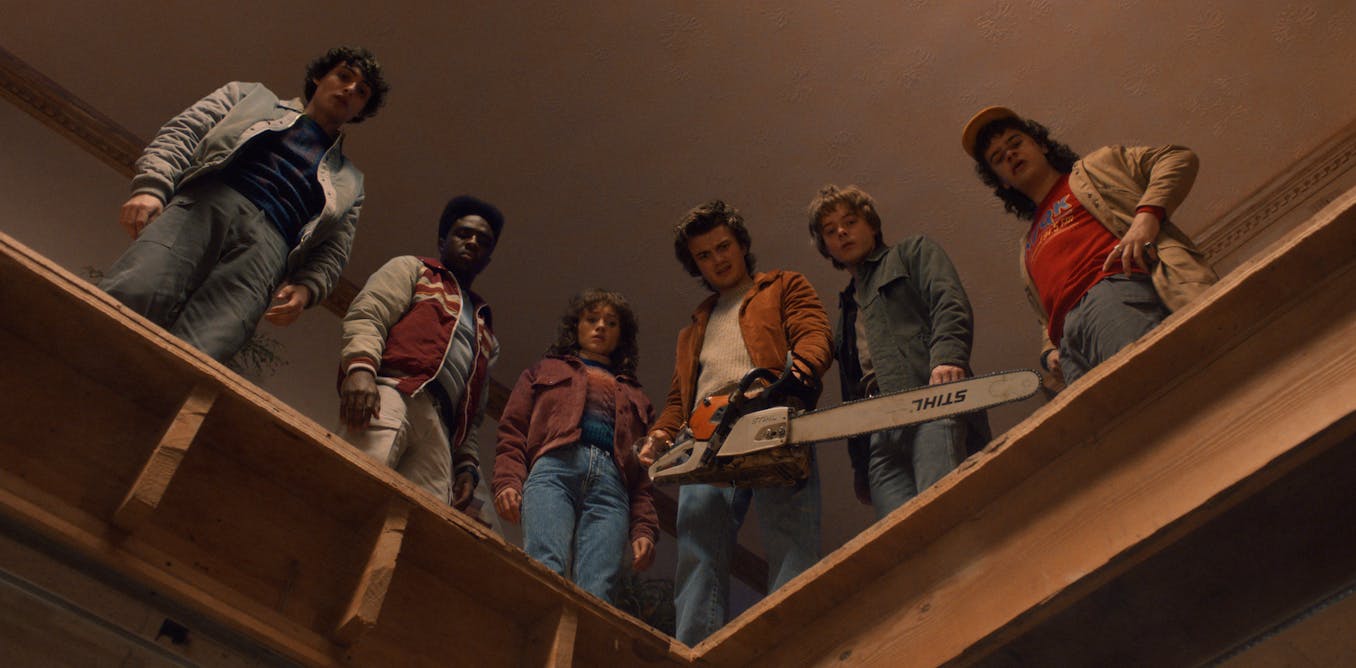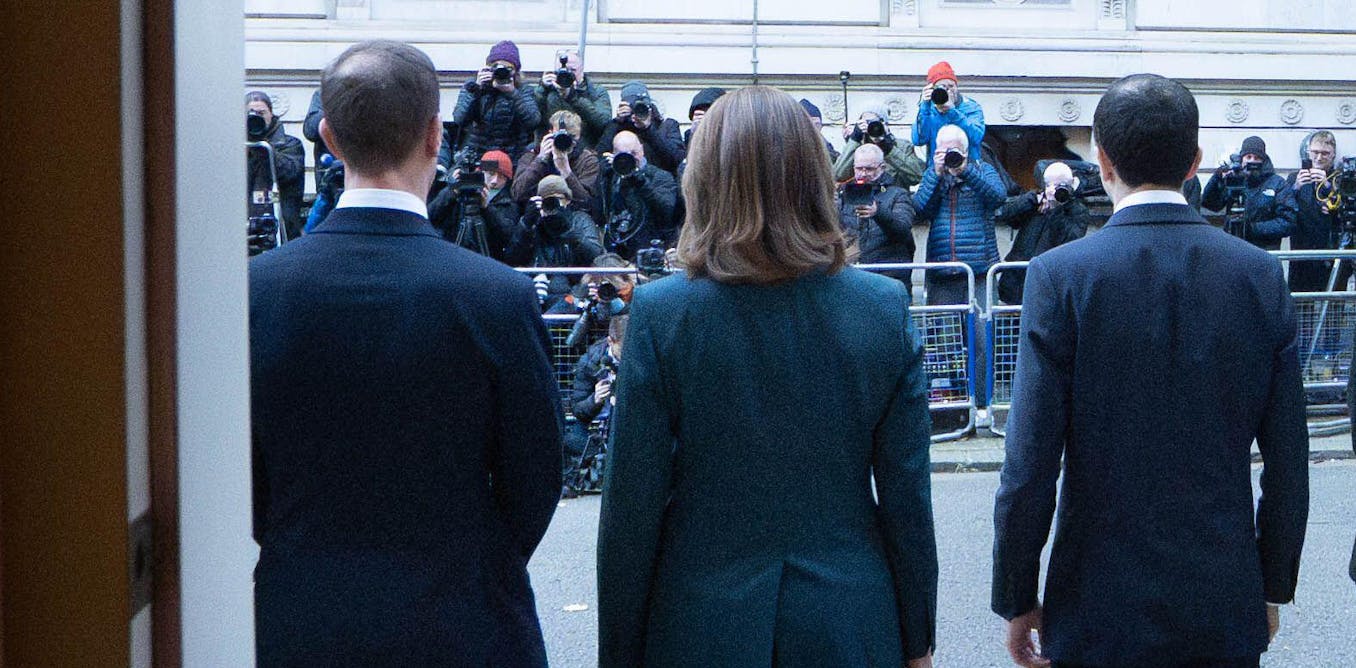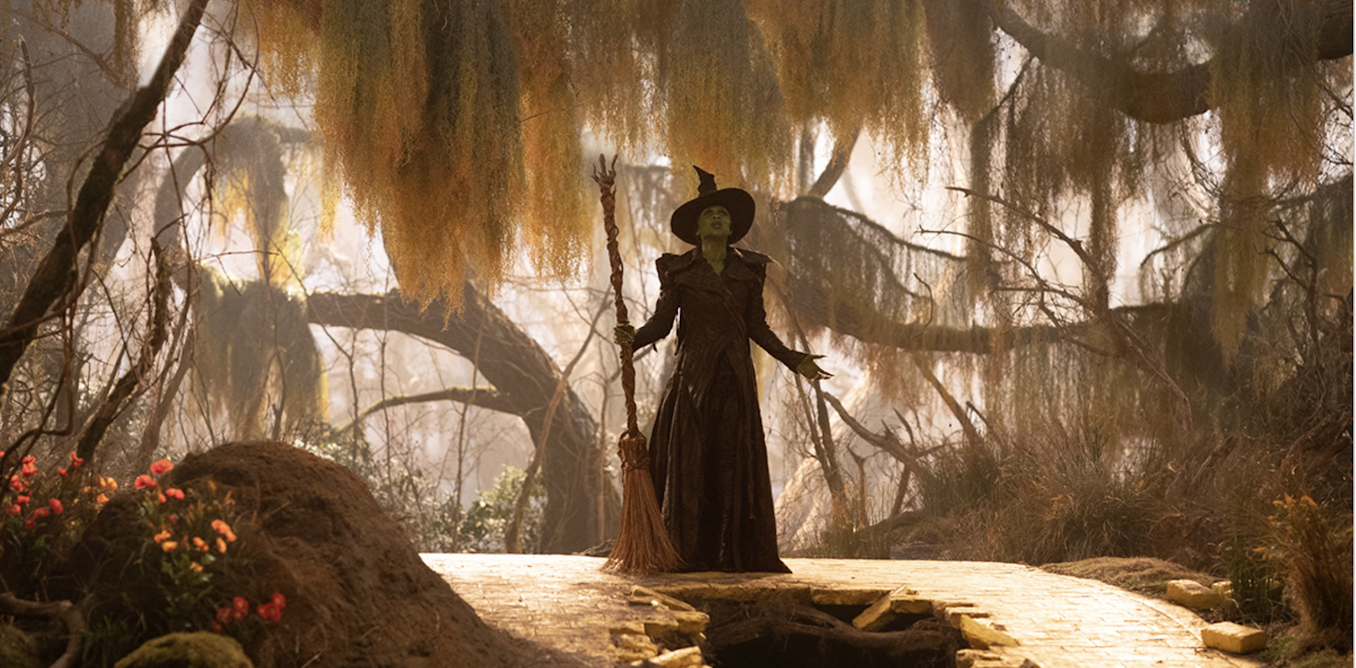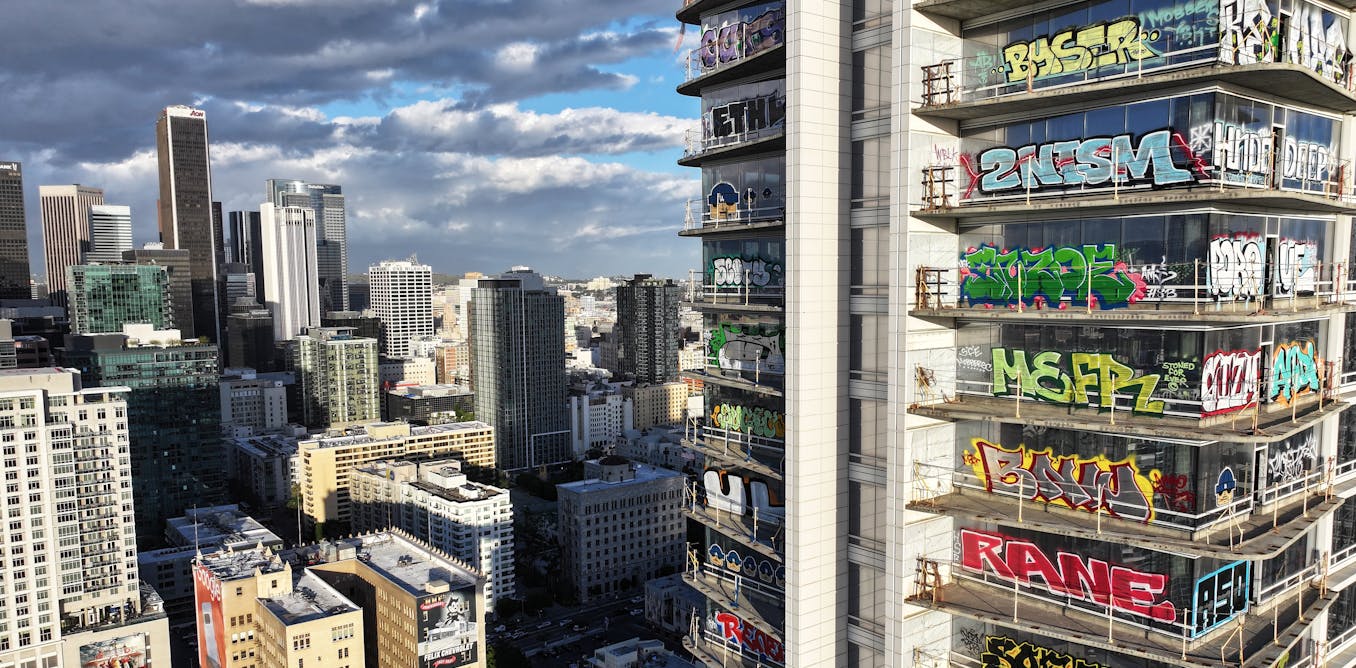The three qualities that matter most in real estate also matter the most to graffiti artists: location, location, location.
In Miami and Los Angeles, cities that contain some of the most expensive real estate in the U.S., graffiti artists have recently made sure their voices can be heard and seen, even from the sky.
In what’s known as “graffiti bombing,” artists in both cities swiftly and extensively tagged downtown skyscrapers that had been abandoned. The efforts took place over the course of a few nights in December 2023 and late January 2024, with the results generating a mix of admiration and condemnation.
As someone who has researched the intersection of graffiti and activism, I see these works as major milestones – and not just because the artists’ tags are perhaps more prominent than they’ve ever been, high above street level and visible from blocks away.
They also get to the heart of how money and politics can make individuals feel powerless – and how art can reclaim some of that power.
Two cities, two graffiti bombings
Since late 2019, Los Angeles’ billion-dollar Oceanwide Plaza – a mixed-use residential and retail complex consisting of three towers – has stood unfinished. The Beijing-based developer was unable to pay contractors, and ongoing financing challenges forced the company to put the project on pause. It’s located in one of the priciest parts of the city, right across the street from Crypto.com Arena, where the 2024 Grammy Awards were held.
Hundreds of taggers were involved in the Los Angeles graffiti bombing. It may never be publicly known how the idea was formed and by whom. But it seemed to have been inspired by a similar project that took place in Miami during Art Basel, the city’s annual international art fair.
In November 2023, the city of Miami announced that a permit to demolish One Bayfront Plaza site, an abandoned former VITAS Healthcare building, had been filed.
Miami is known for its elaborate spray-painted murals. There’s also a rich tradition of graffiti in the city. So Miami was a natural gathering place for graffiti artists during Art Basel in December 2023, and One Bayfront Plaza became the canvas for taggers from around the world.
Over the course of a few days, graffiti artists – some of whom rappelled down the side of the building – tagged the brutalist, concrete structure with colorful bubble letters spelling their graffiti names: “EDBOX,” “SAUTE” and “1UP,” and hundreds more.
The response to the Miami bombing was more awe than outrage, perhaps because the building will soon be torn down. It elicited comparisons to 5Pointz, a collection of former factory buildings in the Queens borough of New York City that was covered with graffiti and became a landmark before being demolished in 2014.
Meaning and motivation
In the early 2000s, when I started researching street graffiti, I learned that there are different names for different graffiti types.
“Tags” are pseudonyms written in marker, sometimes with flourishes. “Fill-ins” or “throw-ups” are quickly painted fat letters or bubble letters, usually outlined.
“Pieces” involve more colorful, complicated and stylized spray-painted letters.
The tradition of painting ornate graffiti names made me think of Paul Cézanne, who painted the same bowl of fruit over and over. The carefully chosen names and their letters become the subject that writers use to practice their craft.
But I also wanted to know why people graffitied.
Many graffiti writers tagged spaces to declare their existence, especially in a place like New York City, where it is easy to feel invisible. Some writers who became well known in the early 1970s, like Taki 183, scrawled their names and street numbers all over the city.
During my research, I spoke with one New York graffiti artist whose work had garnered a lot of attention in the 1980s. He explained that his writing had no concrete political messages.
“But,” he added, “the act of writing graffiti is always political.”
Another graffiti artist I interviewed, “PEN1,” stood with me on a street in lower Manhattan, pointing out one of his many works. It was a fill-in – huge letters near the top of a three- or four-story building, very visible from the street.
“Those people have paid so much money to put their message up there,” he said, pointing to nearby billboards, “and I get to put my name up there for free.”
Through my project, which I ended up titling “Unofficial Communication”, I came to understand that writing graffiti on walls, billboards and subway cars was a way of disrupting ideas of private ownership in public, outdoor spaces.
It involved three different sets of players. There were the taggers, who represented people defying the status quo. There were the public and private owners of the spaces. And there was the municipal government, which regularly cleaned graffiti from outdoor surfaces and tried to arrest taggers.
In cities across the U.S., then and now, it’s easy to see whose interests are the priority, whose mistakes governments are willing to overlook, and which people they aggressively police and penalize.
Loud and clear
The names painted on the Los Angeles skyscrapers are the faster and easier-to-complete fill-ins, since time is at a premium and the artists risk arrest.
These vertical graffiti bombing projects on failed skyscrapers, deliberately or not, call attention to the millions of dollars that are absorbed by taxpayers when private developers make bad investments.
Because the names painted on the buildings are fill-ins, they’re not especially artistic. But they did, in fact, make a political statement.
A former graffiti artist who goes by “ACTUAL” told The Washington Post that he’d come out of retirement to contribute to the Los Angeles project.
“The money invested in [the buildings] could have done so much for this city,” he added.
Some of the graffiti artists in Los Angeles were arrested, and the Los Angeles City Council is demanding that the owners of Oceanwide Plaza remove the graffiti, described as the work of “criminals” acting “recklessly.”
Meanwhile, the developers of buildings that have sat, unfinished, for years, in the middle of a housing crisis, have broken no laws.
Some reckless acts, apparently, are more criminal than others.

The post “For graffiti artists, abandoned skyscrapers in Miami and Los Angeles become a canvas for regular people to be seen and heard” by Colette Gaiter, Professor of Art and Design, University of Delaware was published on 02/15/2024 by theconversation.com





































